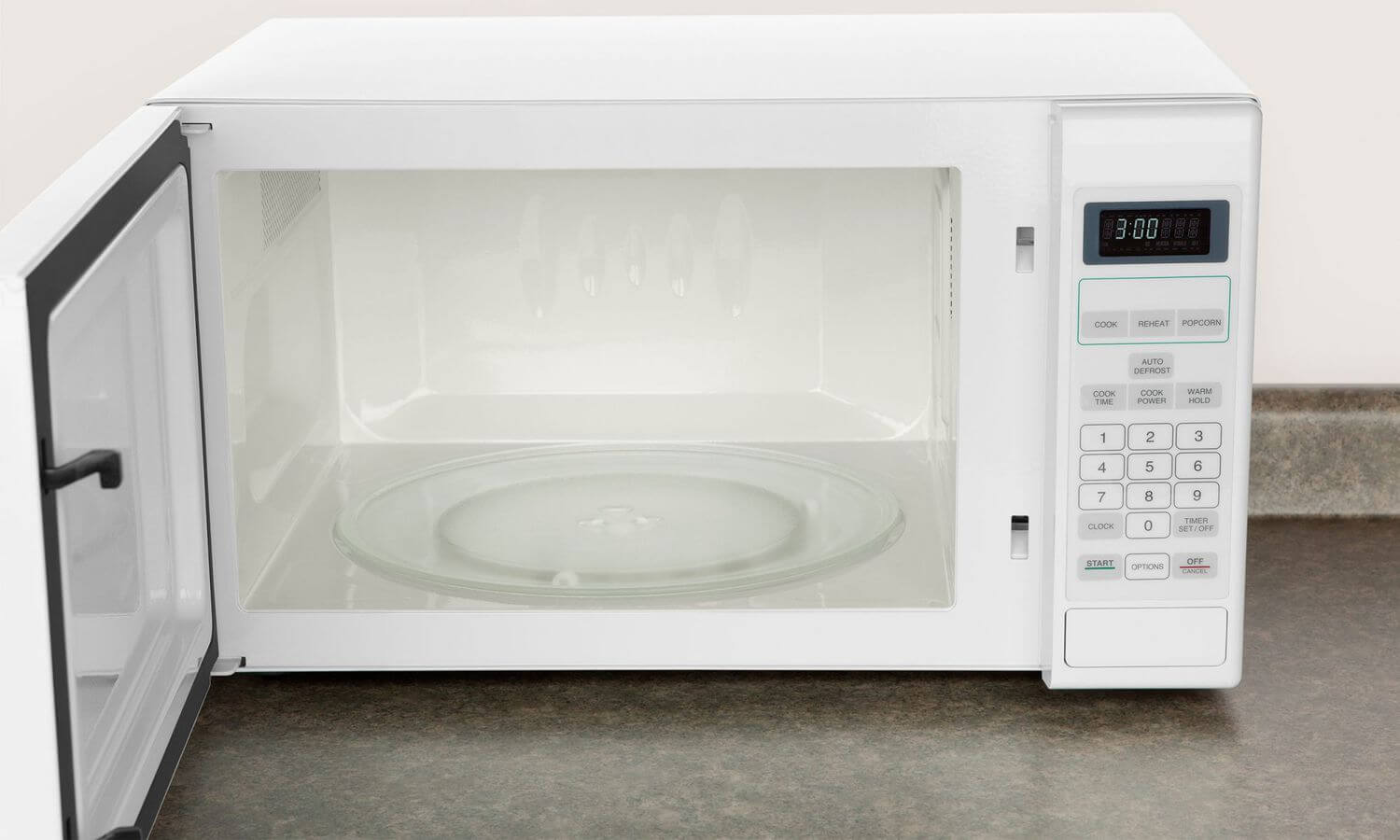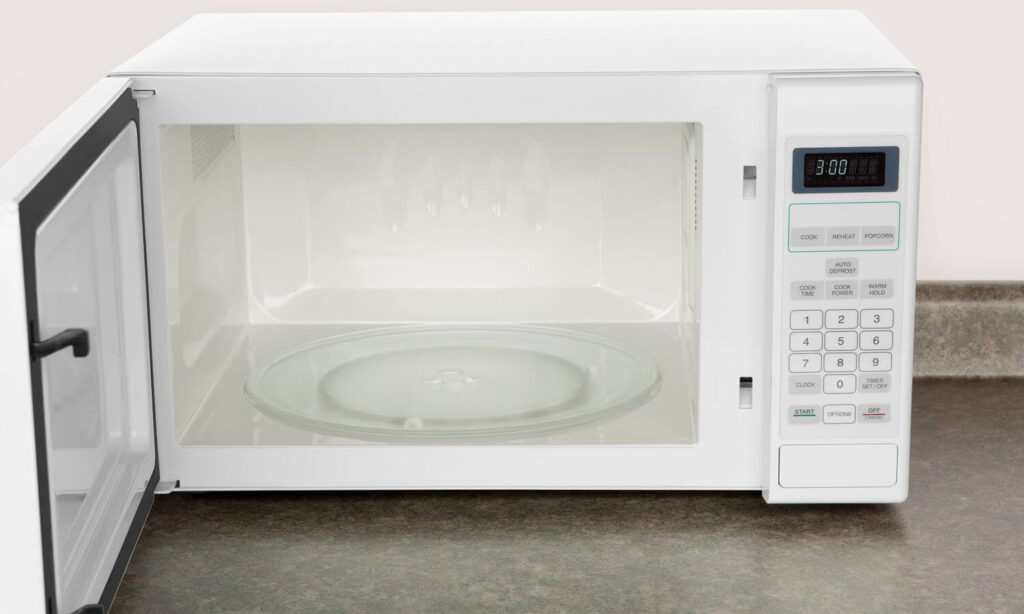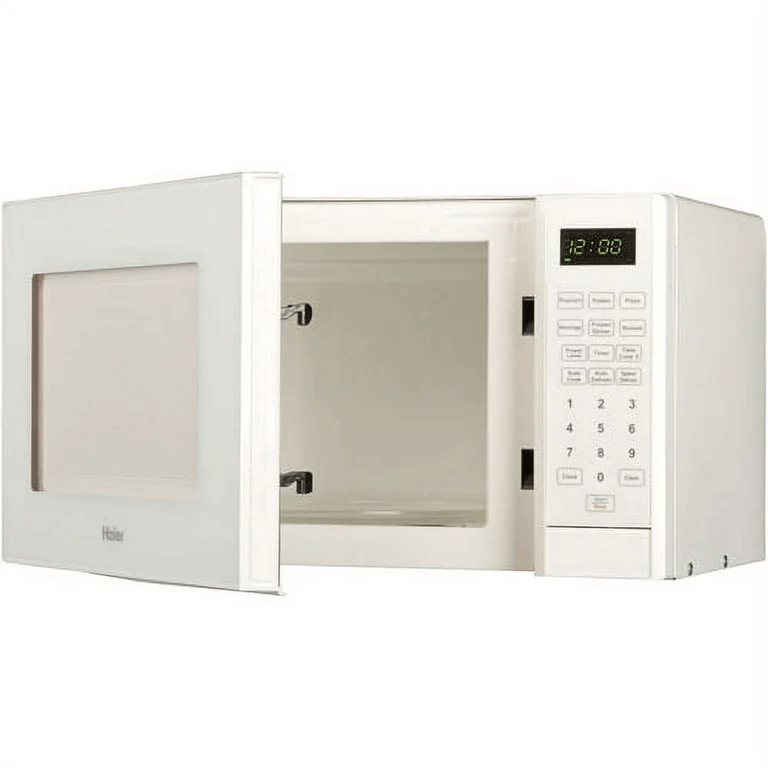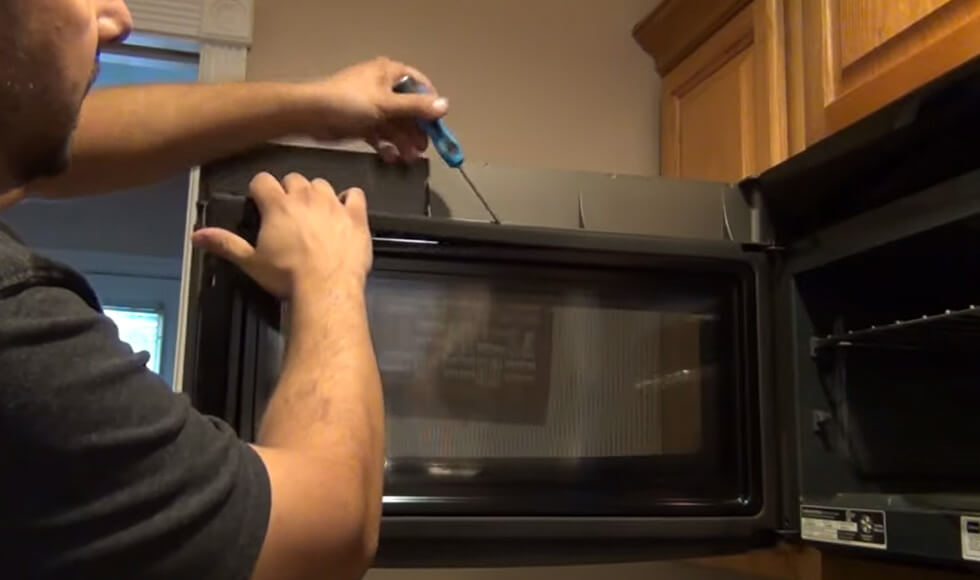

Microwave ovens have revolutionized our kitchens, providing convenience like no other. With the press of a few buttons, we can have hot, delicious food in a matter of minutes. But what do you do when your trusty microwave starts acting up and leaves you with cold leftovers or a sparkly light show? Fear not, for in this comprehensive guide, we’ll dive deep into the world of microwave oven issues, exploring both common and rare problems, their causes, and the solutions to get your microwave back in action.
Common Microwave Oven Problems and Solutions
Microwave Oven Won’t Turn On
Problem: You press the power button, but your microwave remains silent. What’s going on?
Solution:
- Check the Power Source: It may seem obvious, but check if your microwave is properly plugged in. Loose plugs or disconnected cords can be the culprit.
- Circuit Breaker Blues: Sometimes, a tripped circuit breaker could be the issue. Check your circuit breaker and reset it if necessary.
- Control Panel Reset: Some microwaves have a control panel lock feature. Try pressing and holding the “Stop” or “Cancel” button for about 3-5 seconds to unlock it.
- Professional Help: If none of the above works, it’s time to call in the pros. There may be deeper electrical issues that need expert attention.
Microwave Sparks and Makes Strange Noises
Problem: Your microwave starts sparking or making strange noises that sound like it’s auditioning for a sci-fi movie.
Solution:
- Check the Dishware: Microwaving metallic or silver-rimmed dishes and containers can lead to sparks. Stick to microwave-safe cookware.
- Look for Foreign Objects: Conduct a thorough inspection for any foreign objects or bits of foil that may have accidentally found their way into your microwave.
- Rotating Tray Alignment: Sometimes, the rotating tray gets off-kilter. Make sure it’s sitting properly on the support ring.
- Professional Tune-Up: If sparks and noises persist, it’s best to consult a professional. There might be electrical issues or malfunctioning components that require expert attention.
Microwave Oven Isn’t Heating Food Properly
Problem: You pop your leftovers in, press the buttons, and wait eagerly, but the food comes out as cold as a polar bear’s picnic.
Solution:
- Microwave Power Setting: It’s easy to accidentally set your microwave to a low power level. Make sure it’s at full power (100%) for effective reheating.
- Container Size Matters: Use microwave-safe containers that are large enough for your food. If the container is too small, it can affect even heating.
- Stir and Rotate: Microwaves have hot and cold spots. Give your dish a good stir and rotate it during cooking to distribute the heat evenly.
- Magnetron Replacement: If your microwave still refuses to play nice, it might be time to consider replacing the magnetron, which is the component responsible for heating the food.
Microwave Oven Has a Funky Smell
Problem: Your microwave is stinking up your kitchen, and it’s not with the delightful aroma of your leftovers.
Solution:
- Cleanliness is Next to Godliness: Start with a good cleaning session. Remove any food splatters, spills, or remnants of long-forgotten meals. Use a mixture of water and lemon for a fresh scent.
- Vinegar Magic: Place a bowl of water with vinegar in your microwave and run it for a few minutes. The vinegar helps eliminate odors.
- Baking Soda Deodorizer: After cleaning, leave an open box of baking soda in your microwave to absorb lingering odors.
- Don’t Forget the Filters: If your microwave has filters, clean or replace them as needed.
Less Common Microwave Oven Issues and Solutions

Microwave Door Won’t Close Properly
Problem: You struggle to close the microwave door, or it won’t stay shut.
Solution:
- Inspect Latch and Hinges: Check the latch and hinges for any obstructions or damage. Clear any debris and ensure they are functioning correctly.
- Door Alignment: Sometimes, the microwave door may become misaligned. Adjust it carefully to ensure it closes securely.
- Professional Repair: If the latch or hinges are severely damaged, it’s best to call a professional technician for repairs.
Microwave Touchpad Doesn’t Respond
Problem: You press the buttons on the control panel, but nothing happens.
Solution:
- Clean the Control Panel: Sometimes, dirt and residue on the control panel can interfere with the touchpad’s responsiveness. Clean it thoroughly with a soft, damp cloth.
- Restart the Microwave: Unplug the microwave for a few minutes and then plug it back in. This can sometimes reset the control panel.
- Check for Loose Cables: Inspect the cables connecting the control panel to the mainboard. Ensure they are securely attached.
- Replace the Control Panel: If all else fails, you may need to replace the control panel, which might be a job for a professional technician.
Microwave Turntable Not Rotating
Problem: Your microwave’s turntable isn’t spinning as it should.
Solution:
- Turntable On/Off Setting: Check if you accidentally turned off the turntable function. Many microwaves have an option to disable it.
- Drive Coupler Inspection: Examine the drive coupler, which connects the turntable to the motor. It may be worn out or broken and require replacement.
- Drive Motor Troubles: If the motor that drives the turntable is malfunctioning, it might need professional attention.
Microwave Generates Smoke
Problem: Smoke starts billowing from your microwave, causing panic.
Solution:
- Stop Cooking Immediately: Turn off the microwave and unplug it to prevent further damage or risk of fire.
- Inspect the Interior: Carefully check the interior for any burnt food or debris that might be causing the smoke. Remove and clean it thoroughly.
- Check for Electrical Issues: If there are electrical issues causing the smoke, it’s crucial to have the microwave examined by a professional.
Microwave Display is Blank
Problem: The microwave display isn’t showing any information or appears blank.
Solution:
- Check Power Supply: Ensure the microwave is receiving power. Verify that it’s properly plugged in and the circuit breaker isn’t tripped.
- Control Panel Reset: As mentioned earlier, some microwaves have a control panel lock feature. Try pressing and holding the “Stop” or “Cancel” button for about 3-5 seconds to unlock it.
- Professional Assistance: If the display remains blank, there might be an issue with the control panel or electronics, and you’ll need professional help.
Advanced Microwave Oven Troubleshooting

For those who are up for a bit of advanced troubleshooting, here are some additional tips:
Replacing the Microwave Fuse
Problem: Your microwave suddenly stopped working, and you suspect a blown fuse.
Solution:
- Safety First: Unplug the microwave and let it sit for a few minutes to discharge any stored energy.
- Locate the Fuse: The fuse is usually located near the power cord’s entry point. Consult your microwave’s manual for specific instructions on accessing the fuse.
- Check and Replace: Inspect the fuse. If it’s blown, replace it with an identical one. Fuses are available at most hardware stores.
Diagnosing and Replacing the Magnetron
Problem: If your microwave is not heating properly, the magnetron could be the culprit.
Solution:
- Safety Precautions: Always unplug the microwave and discharge any stored energy before attempting any repairs.
- Locate the Magnetron: The magnetron is typically found behind the control panel or on the side of the microwave. Consult your manual for its exact location.
- Testing the Magnetron: Use a multimeter to test the magnetron’s continuity. If it fails the test, it’s time for a replacement.
- Replacing the Magnetron: Replacing a magnetron is a complex task and is best left to experienced technicians, as it involves high voltage components.
Maintenance Tips to Prevent Microwave Issues
Prevention is often the best cure, and maintaining your microwave can save you from a host of issues. Here are some tips to keep your microwave in tip-top shape:
- Regular Cleaning: Frequent cleaning of your microwave prevents the build-up of food splatters and residue. A mixture of water and lemon can keep it smelling fresh.
- Use Microwave-Safe Cookware: Always use microwave-safe dishes and containers. Avoid anything metallic or with silver rims, as they can cause sparks.
- Follow Manufacturer’s Instructions: Read the manufacturer’s manual to understand your microwave’s features, limitations, and safety instructions.
- Don’t Overload It: Avoid overloading your microwave with large or too many items at once. This can affect heating and cause uneven cooking.
- Handle with Care: Close the microwave door gently to prevent damage to the latch and hinges.
- Routine Inspections: Regularly check for signs of damage or wear and tear and address them promptly.
When to Call a Professional Technician
While some microwave issues can be fixed with a bit of DIY spirit, others require the expertise of a professional technician. Here are some signs that it’s time to call in the experts:
- Electrical Issues: If there are problems with the electrical components, wiring, or circuits, it’s best left to professionals.
- Gas Leaks: If your microwave operates on gas, and you suspect a gas leak, this is a serious safety concern. Evacuate your home and call for professional assistance immediately.
- Severe Damage: If your microwave has sustained significant physical damage, such as a cracked casing, it’s safer to have a technician assess the appliance.
- Complex Repairs: For tasks like magnetron replacement, it’s generally recommended to rely on experienced technicians.
In conclusion, your microwave can be a true kitchen companion, but like any appliance, it can encounter issues from time to time. Being equipped with the knowledge to troubleshoot and solve these problems can save you time, money, and the frustration of cold meals. Remember to prioritize safety in all your microwave-related endeavors and consult your microwave’s manual for specific guidance. With a little care and maintenance, your microwave will continue to serve you hot and delicious meals for years to come. Happy microwaving!
Frequently Asked Questions (FAQ) – Solving Microwave Oven Issues
Got questions about your microwave acting up? We’ve got answers! Check out these frequently asked questions for handy solutions to common microwave oven problems.
1. Why won’t my microwave turn on?
Answer: If your microwave is unresponsive, start by checking the power source. Ensure it’s properly plugged in and the outlet is functioning. If that’s not the issue, verify the circuit breaker isn’t tripped. Some microwaves also have a control panel lock feature that may need to be unlocked by holding the “Stop” or “Cancel” button for a few seconds. If all else fails, it’s time to call in a professional technician.
2. My microwave sparks and makes strange noises. What should I do?
Answer: Microwave sparking is often caused by metallic or silver-rimmed dishes. Ensure you’re using microwave-safe cookware. Also, check for any foreign objects or bits of foil that may have accidentally found their way into your microwave. If the issue persists, consult a professional, as there may be electrical issues or malfunctioning components.
3. Why is my microwave not heating food properly?
Answer: Inadequate heating can result from a low power setting, small or incorrect containers, or uneven heating due to hot and cold spots. Make sure your microwave is set to full power (100%), use appropriately-sized microwave-safe containers, stir and rotate your food during cooking, and consider replacing the magnetron if problems persist.
4. My microwave has a strange odor. How can I get rid of it?
Answer: A funky smell in your microwave is often due to food residues. Clean your microwave thoroughly with a mixture of water and lemon. You can also eliminate odors by heating a bowl of water with vinegar or leaving an open box of baking soda in the microwave. Don’t forget to clean or replace any filters if your microwave has them.
5. What do I do if my microwave door won’t close properly?
Answer: Inspect the latch and hinges for obstructions or damage. Ensure they are clean and functioning correctly. If misalignment is the issue, adjust the door carefully. For severely damaged latches or hinges, it’s best to contact a professional technician for repairs.
6. My microwave touchpad doesn’t respond. How can I fix it?
Answer: Begin by cleaning the control panel to remove dirt or residue that may affect the touchpad’s responsiveness. You can also try unplugging the microwave for a few minutes to reset the control panel. Inspect the cables connecting the control panel to the mainboard and ensure they are securely attached. If these efforts don’t work, consider replacing the control panel or contacting a professional.
7. What should I do if my microwave turntable isn’t rotating?
Answer: First, check if you accidentally turned off the turntable function. If that’s not the issue, inspect the drive coupler, which may be worn out or broken and require replacement. If the problem lies with the drive motor, you’ll need professional assistance.
8. My microwave is generating smoke. How do I handle this situation?
Answer: If your microwave is emitting smoke, stop cooking immediately, unplug it, and let it sit to discharge any stored energy. Carefully inspect the interior for burnt food or debris that may be causing the smoke. Remove and clean it thoroughly. If there are electrical issues causing the smoke, seek professional assistance.
9. The display on my microwave is blank. What can I do?
Answer: First, ensure that the microwave is receiving power and is correctly plugged in. Check the circuit breaker for any trips and reset it if necessary. If the display remains blank, there may be an issue with the control panel or electronics, which requires professional attention.
10. Can I replace the microwave fuse myself?
Answer: Replacing the microwave fuse is possible if you’re comfortable with electrical work. Always unplug the microwave, discharge any stored energy, and follow safety precautions. Consult your microwave’s manual to locate the fuse. If it’s blown, replace it with an identical one, readily available at most hardware stores.
11. How can I diagnose and replace the magnetron in my microwave?
Answer: Diagnosing and replacing the magnetron is a complex task and should be handled by experienced technicians. Always prioritize safety by unplugging the microwave and discharging stored energy. Consult your microwave’s manual for specific instructions on locating and testing the magnetron’s continuity.
